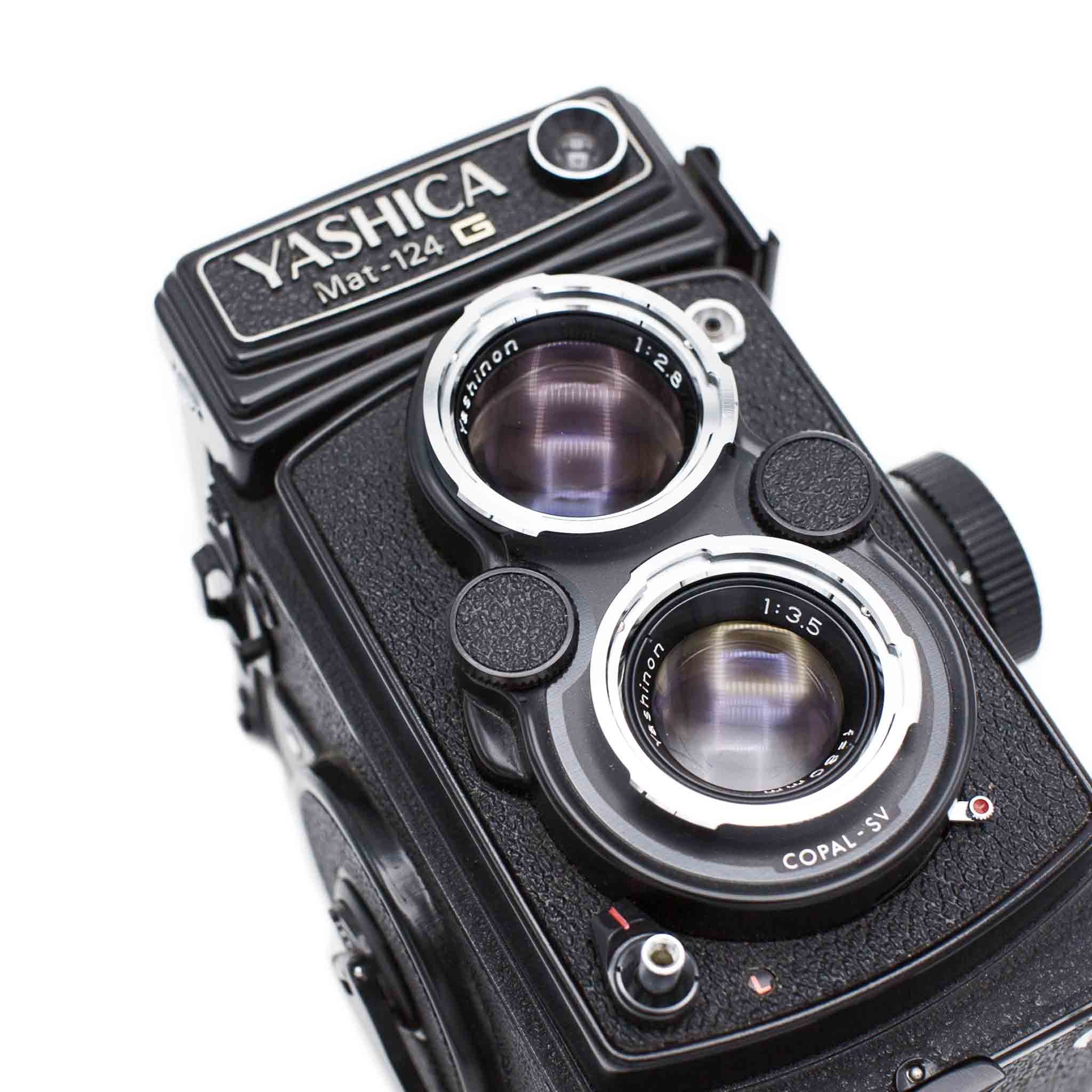6 Most Affordable Medium Format Film Cameras 2024
Medium format film photography is celebrated for its exceptional image quality, depth of field, and the tactile experience it offers. Many enthusiasts and professionals are turning to medium format for its distinctive aesthetic and the unparalleled detail it provides in each frame. Medium format can be expensive to break into. If you are thinking about trying out medium format, but want an affordable start these film cameras are for you.
Holga 120 Series
Overview: Holga photos are very recognizable for their dreamy, ethereal quality. The plastic lens often produces soft focus around the edges, while the center may be relatively sharp. Vignetting is common, with the corners of photos appearing darker, which can add an artistic feel to the images. Light leaks are also a characteristic feature, giving photos unexpected flares and streaks of light.
Key Features:
Plastic Body and Lens: The Holga's body and lens are primarily made of plastic, contributing to both the camera's low cost and its distinct image quality, characterized by soft focus, vignetting, and light leaks.
Simple Controls: The camera features very basic controls, with a fixed shutter speed (typically around 1/100th of a second), a few aperture settings (often just two, labeled as "sunny" and "cloudy"), and manual focus with zone focusing options (e.g., portrait, small group, large group, infinity). This is the disposable camera of medium format.
Multiple and Long Exposures: Many Holga models allow for easy multiple exposures and long exposures, as the shutter can be triggered multiple times before advancing the film and there is no automatic shutter speed control.
120 Format Flexibility: The standard Holga 120 series can shoot in both 6x6 cm and 6x4.5 cm formats, depending on the model and whether a mask is used inside the camera.
Modifications and Customizations: The simple design of the Holga lends itself to a wide range of modifications, from DIY hacks to improve its light leaks and stability, to conversions for pinhole photography, panoramic images, and more. There is a real sense of play with the Holga in the myriad of ways you can manipulate the camera and influence the final images.
Yashica Mat-124G
Overview: Photographers often praise the Yashica Mat-124G for its straightforward operation, making it suitable for both beginners and experienced medium format shooters. The 80mm Yashinon lens is known for its sharpness, contrast, and beautiful bokeh, making the Mat-124G capable of producing high-quality images with a distinct medium format look.
Key Features:
Film Format: The medium format film camera uses 120 film to produce 6x6 (cm) square format images. It can also use expired 220 film with a pressure plate adjustment.
Focusing System: The Mat-124G features a ground glass focusing screen with a split-image spot in the center, surrounded by a microprism ring for precise focusing.
Shutter: It has a Copal-SV shutter with speeds ranging from 1 second to 1/500th of a second, plus a Bulb (B) mode for long exposures.
Light Meter: The camera includes a CdS light meter, which provides a match-needle exposure system that’s easily visible on the focusing screen.
Build and Design: The Mat-124G is known for its robust build and relatively compact design for a medium format camera. It has a robust metal body with a leatherette finish.
Mamiya C330
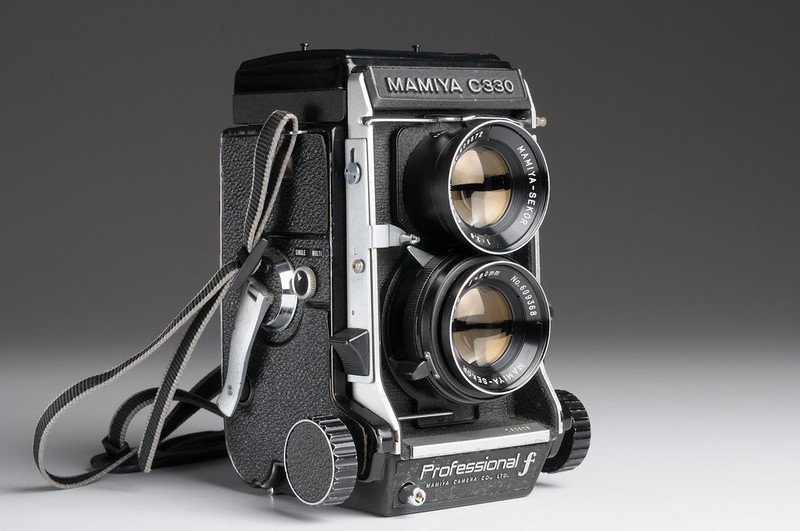
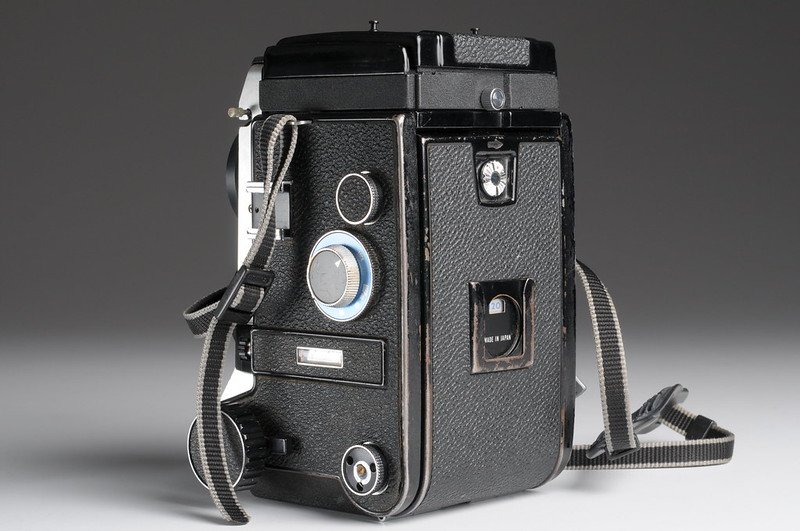
Overview: The Mamiya C330, along with its siblings in the C series, is highly regarded in the film photography community. With high-quality lenses and the medium format's inherent resolution advantage, the C330 was capable of producing exceptionally detailed and nuanced images. The system's modularity extended beyond lenses to include interchangeable focusing screens and viewfinders, further enhancing its versatility.
Key Features:
Interchangeable Lenses: Unlike most TLRs, the C330 features a system of interchangeable lenses ranging from wide-angle to telephoto, including the popular 80mm standard lens. This system adds versatility unmatched by most TLRs of its time.
Bellows Focusing System: The C330 uses a bellows system for focusing, allowing for very close focusing distances and making it suitable for macro photography. This is a significant advantage over the fixed body design of most TLRs from this time.
Parallax Correction: The camera offered parallax correction via a moving prism inside the viewing system, which adjusted as the bellows were extended or retracted.
Film Advance: A single-action crank advanced the film and cocked the shutter, streamlining operation and improving shooting speed.
Build Quality: Known for its durable, all-metal construction, the C330 was built to endure the rigors of professional use.
Viewing System: The waist-level viewfinder included a pop-up magnifier and a sports finder, aiding composition and focus accuracy.
Multiple Exposures: Capable of multiple exposures, the C330 allows for the exploration of creative and manual photographic techniques.
Pentax 645
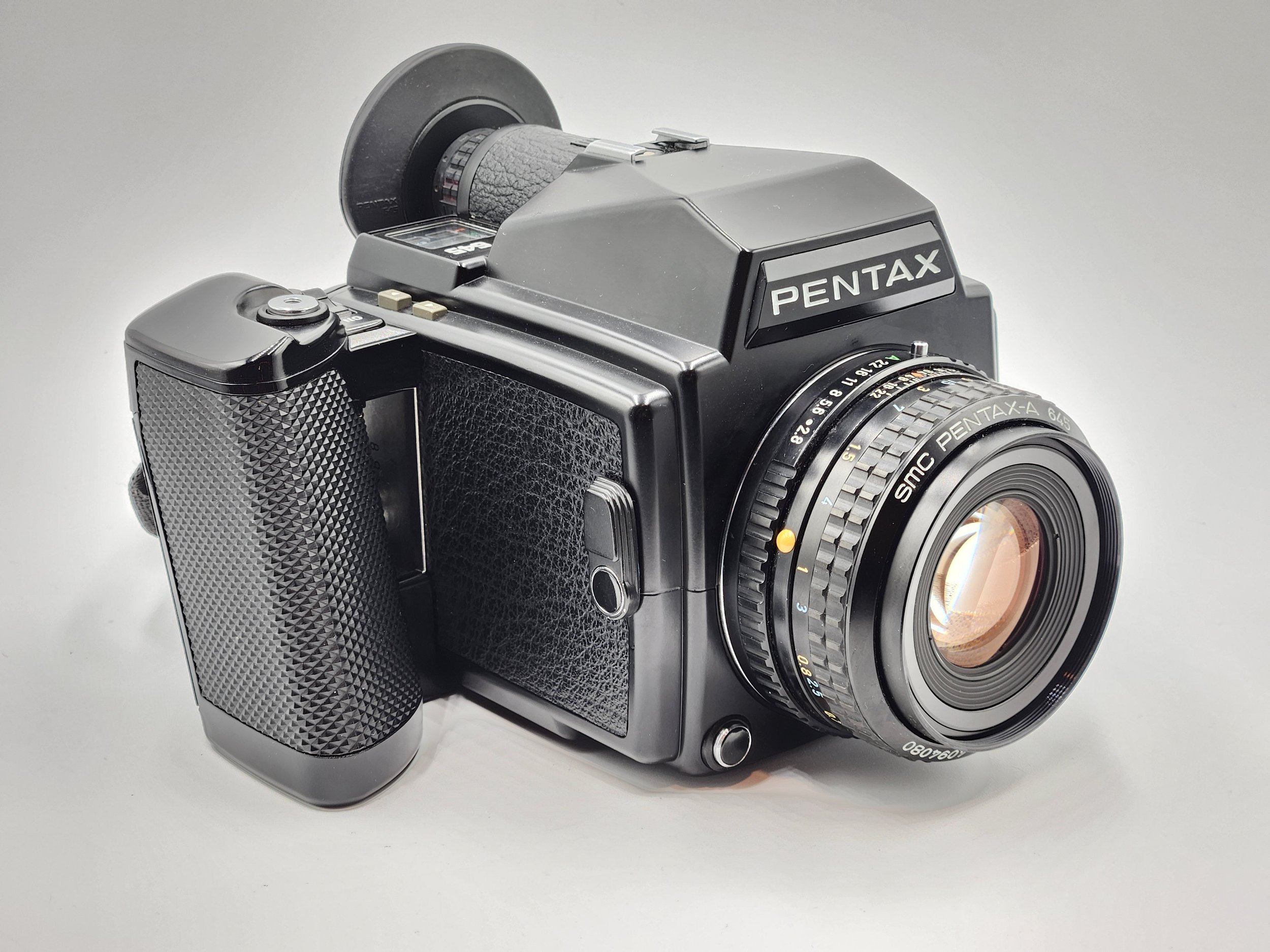
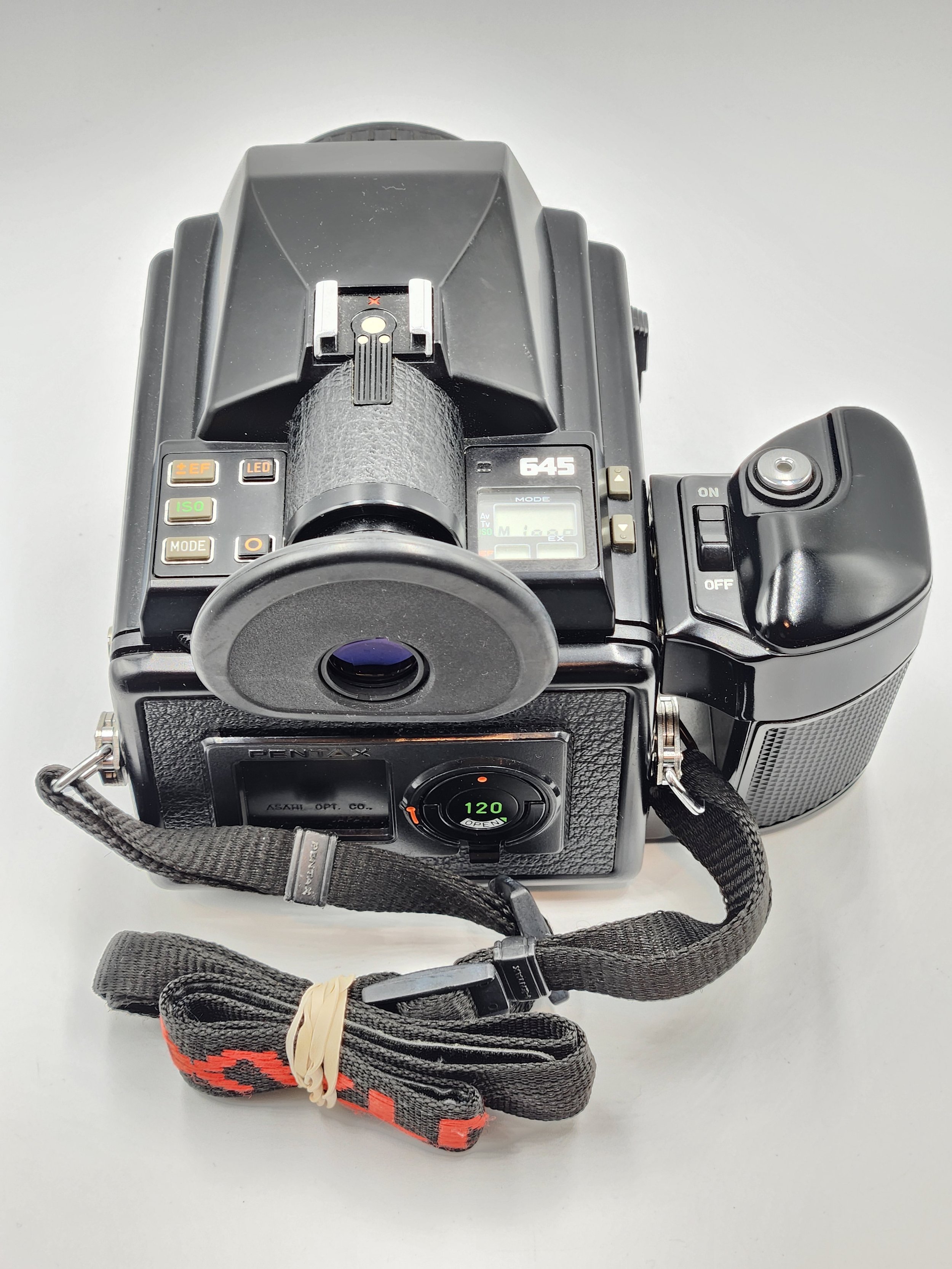
Overview: The Pentax 645 is a medium format film camera system introduced by Pentax in 1984. It was designed to bridge the gap between 35mm SLR cameras and larger medium format cameras, offering a more portable and user-friendly option for medium format film photographers. This film camera uses 120 or expired 220 roll film to produce 6x4.5 (cm) negatives, a smaller size compared to traditional 6x6 or 6x7 medium format, allowing for more frames per roll.
Key Features:
Lens System: The Pentax 645 system includes a wide range of interchangeable lenses from wide-angle to telephoto, including prime and zoom options, with the Pentax-A and later Pentax-FA series offering autofocus capabilities in newer models like the 645N and 645NII.
Autofocus: The 645N and 645NII models have autofocus, a significant feature for medium format cameras, improving ease of use and shooting speed.
Metering and Exposure: The cameras offer multiple metering modes including matrix, center-weighted, and spot metering, with manual and auto-exposure modes to cater to various shooting conditions.
Viewfinder: This film camera has a large, bright viewfinder with interchangeable focusing screens to enhance composition and focusing accuracy.
Build and Design: The Pentax 645 series is known for its robust build and ergonomic design, making it comfortable to use despite its larger size compared to 35mm film cameras.
Film Advance: It’s motorized film advance allows for faster shooting, with the 645N and 645NII models featuring auto film loading and winding.
Modularity: The system's modularity extends to removable film backs, allowing photographers to switch between film types quickly.
Bronica SQ-A
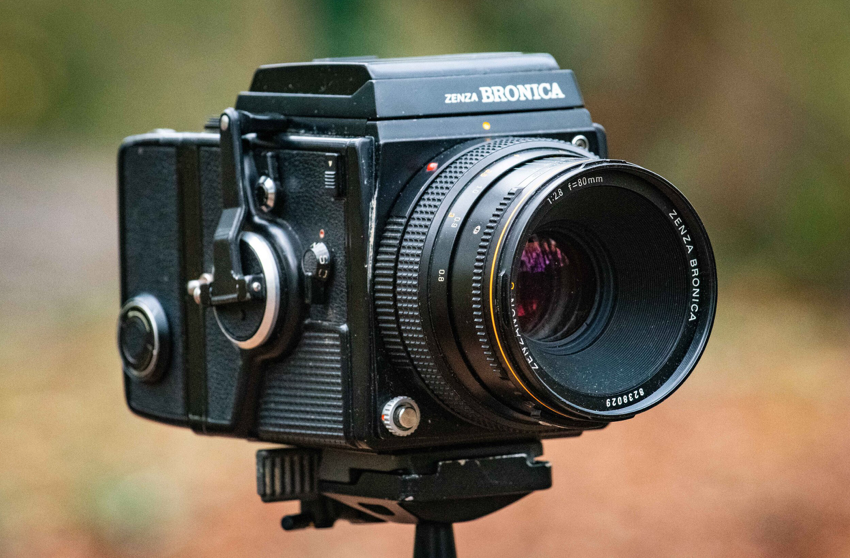
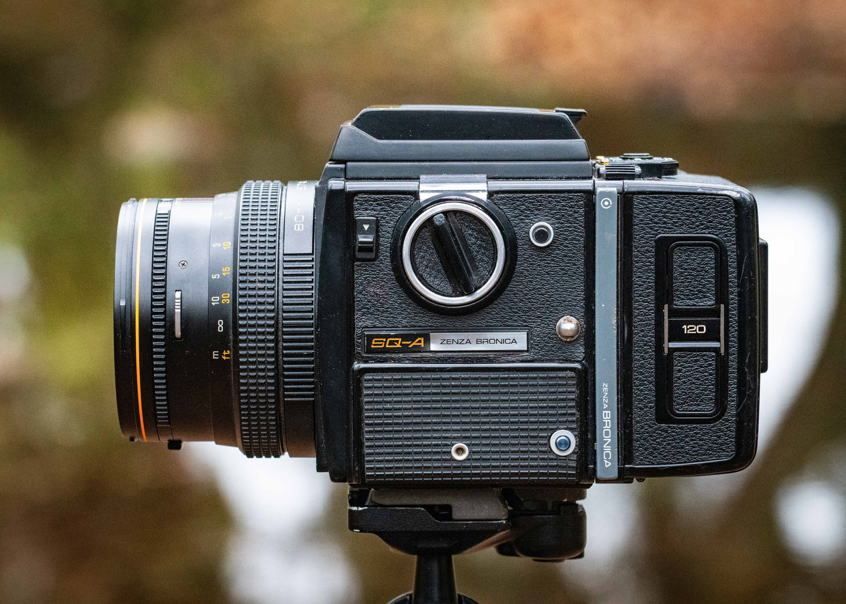
Overview: At its introduction, the SQ-A offered a compelling alternative to more expensive medium format systems, providing comparable image quality and versatility at a more accessible price point. The Bronica SQ-A is capable of producing high-quality images with excellent detail, depth, and tonality. Often compared to Hasselblad cameras of the same era, the Bronica SQ-A is a film camera with a more affordable entry into the high-quality 6x6 medium format realm.
Key Features:
Interchangeable Lenses: The SQ-A supports a wide range of high-quality Zenzanon-S lenses, from wide-angle to telephoto to specialty lenses like macro and shift lenses.
Modular System: The film camera's modular design includes interchangeable film backs, viewfinders (waist-level and prism finders), and focusing screens, offering great flexibility to adapt to various shooting conditions and styles.
Film Backs: The system allows for mid-roll film changes due to its interchangeable film back design. Different film backs can be used to switch between film types or formats without finishing a roll. This is specifically a great feature for medium format studio photographers.
Mirror Lock-Up: The SQ-A features a mirror lock-up function to reduce camera shake during exposure, which is especially useful for long exposures and macro photography.


Overview: The Fujifilm GW690 is a medium format rangefinder camera renowned for its exceptional image quality and simplistic design. Often referred to as the "Texas Leica" due to its large size and high-quality optics reminiscent of Leica cameras, the GW690 and its successors (including the GW690II and GW690III models) have garnered a dedicated following among film photography enthusiasts. This camera produces 6x9 cm negatives, one of the largest sizes available for roll film, resulting in exceptional image detail and quality. These medium format film cameras used to be a fairly kept secret but are gaining popularity quickly.
Key Features:
Lens: The GW690 series features a fixed 90mm f/3.5 lens, renowned for its sharpness and clarity, comparable to the quality of large format photography. The lens is a prime lens, meaning it has a fixed focal length, with no zoom capability.
Rangefinder Focusing: The camera uses a rangefinder mechanism for focusing, which involves aligning two images in the viewfinder to achieve focus. This system is known for its precision and allows for quick focusing, making it suitable for street and landscape photography.
Manual Controls: The GW690 series emphasizes manual controls, lacking an in-built light meter, which encourages photographers to fully engage with the photographic process and often results in a more thoughtful approach to image composition and exposure settings.
Build Quality: The camera is known for its robust build, despite its mostly plastic exterior, and is designed to withstand the rigors of professional use.
Full Manual Control: The GW690 series is fully mechanical and manual, requiring film photographers to set both shutter speed and aperture manually, without reliance on batteries. Again, this encourages a more deliberate approach to photography, where each setting is carefully considered. This medium format camera differs from many of the previous choices in that it requires some pre requisite knowledge and skill to operate, but highly worth the price.
If you enjoyed this article please visit nicefilmclub.com for all your scanning and development needs. Leave a comment with anything I missed or just to help engage in the film conversation.




